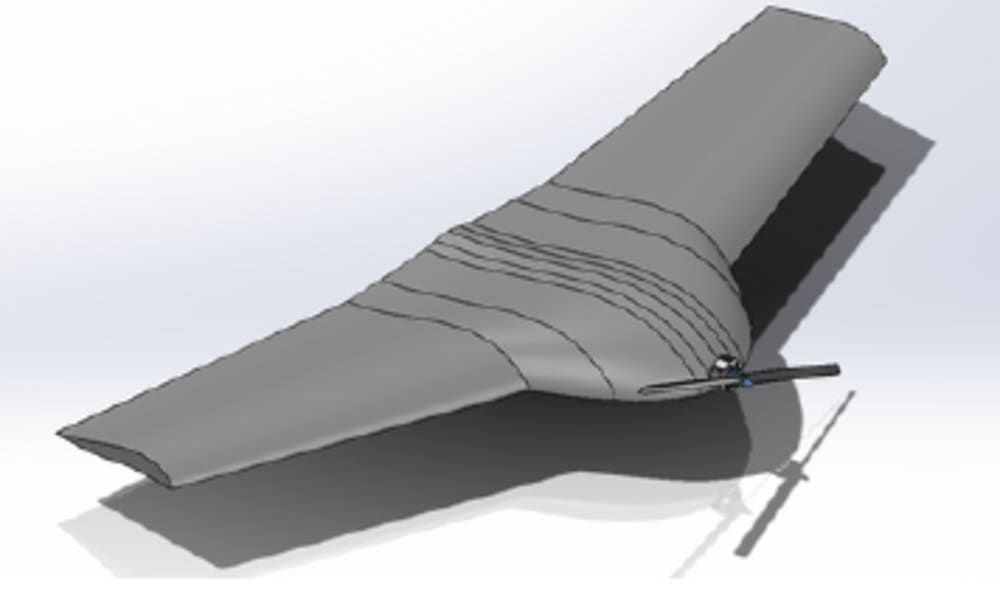Introduction
This entry presents a civilian aircraft design inspired by the JetZero Blended Wing Body (BWB) concept, emphasizing enhanced efficiency, sustainability, and passenger experience. The proposed design integrates advanced aerodynamics, lightweight materials, and state-of-the-art propulsion systems to create a novel aircraft suitable for commercial aviation.
Design and Functionality
The design leverages the aerodynamic advantages of a Blended Wing Body, where the fuselage and wings merge into a single, smooth surface. This configuration reduces drag and increases lift-to-drag ratio, resulting in superior fuel efficiency and range compared to conventional tube-and-wing aircraft. The BWB design also offers increased structural integrity and payload capacity.
Innovations
Aerodynamic Efficiency: The smooth, continuous surface of the BWB reduces parasitic drag. Winglets and vortex generators further enhance aerodynamic performance, contributing to a 20-30% improvement in fuel efficiency.
Advanced Materials: The use of composite materials and advanced alloys reduces the overall weight while maintaining structural strength. These materials also improve corrosion resistance and durability.
Hybrid-Electric Propulsion: The integration of hybrid-electric engines reduces carbon emissions and noise pollution. Electric motors assist during takeoff and climb phases, while traditional jet engines operate during cruise, optimizing fuel consumption.
Cabin Design: The wide-body fuselage allows for innovative cabin layouts, providing increased passenger comfort. The spacious interior can accommodate larger seating arrangements, lounges, and even sleeping quarters.
Feasibility and Manufacturability
The design prioritizes ease of implementation and cost-effective manufacturing. Key considerations include:
Modular Construction: The aircraft is designed with modular components, facilitating assembly and maintenance. This approach also allows for easy upgrades and customization.
Proven Technologies: The use of existing technologies, such as composite materials and hybrid-electric systems, ensures that the design can be realized with current manufacturing capabilities. These technologies have been demonstrated in other aerospace applications, supporting the feasibility of the design.
Supply Chain Integration: Partnerships with established aerospace suppliers and manufacturers streamline the production process. Existing facilities and supply chains can be adapted to produce the new aircraft, minimizing investment in new infrastructure.
Marketability and Applications
The civilian BWB aircraft is targeted at the commercial aviation market, with specific applications including:
Long-Haul Flights: The increased range and fuel efficiency make the aircraft ideal for long-haul routes, connecting major international hubs.
High-Density Routes: The spacious cabin and higher payload capacity support operations on high-density routes, offering airlines the ability to transport more passengers and cargo per flight.
Sustainability Initiatives: The hybrid-electric propulsion system aligns with industry trends towards sustainability and reduced carbon emissions. Airlines seeking to meet environmental regulations and improve their green credentials will find this aircraft particularly appealing.
Conclusion
This civilian alternative to the JetZero BWB represents a significant advancement in aircraft design, combining aerodynamic efficiency, advanced materials, and hybrid-electric propulsion to create a highly innovative and feasible solution for the commercial aviation market. The design not only meets the demands of modern air travel but also supports the industry's shift towards sustainability and enhanced passenger experience.
Like this entry?
-
About the Entrant
- Name:Bala Kannan T
- Type of entry:individual
- Patent status:none

